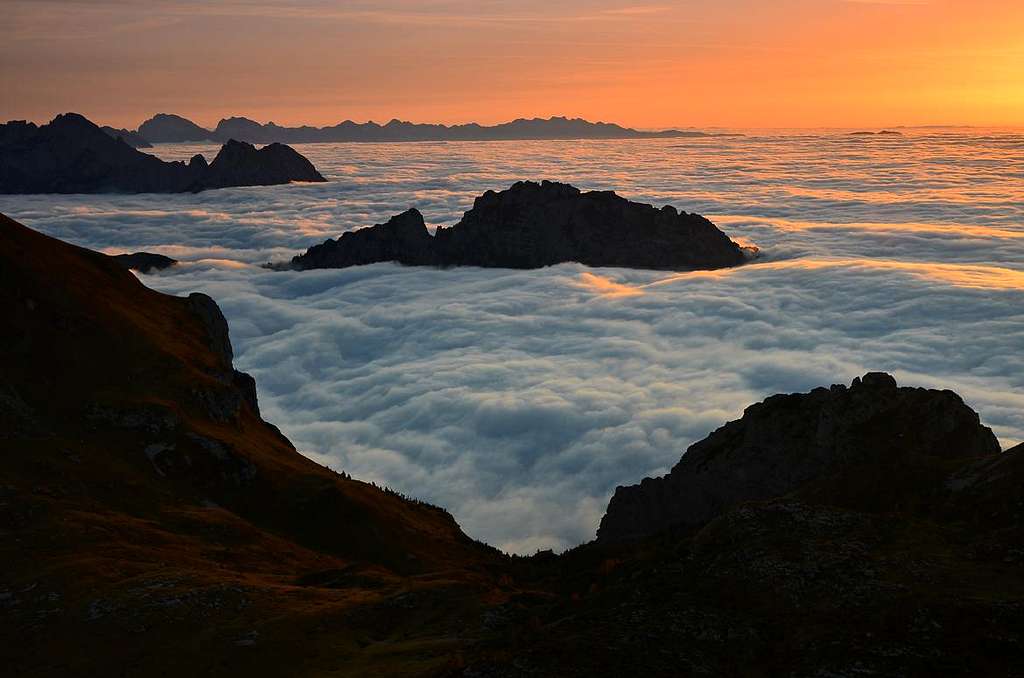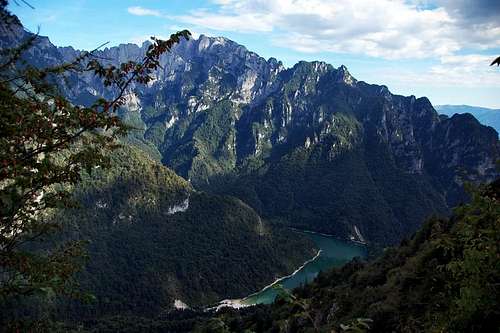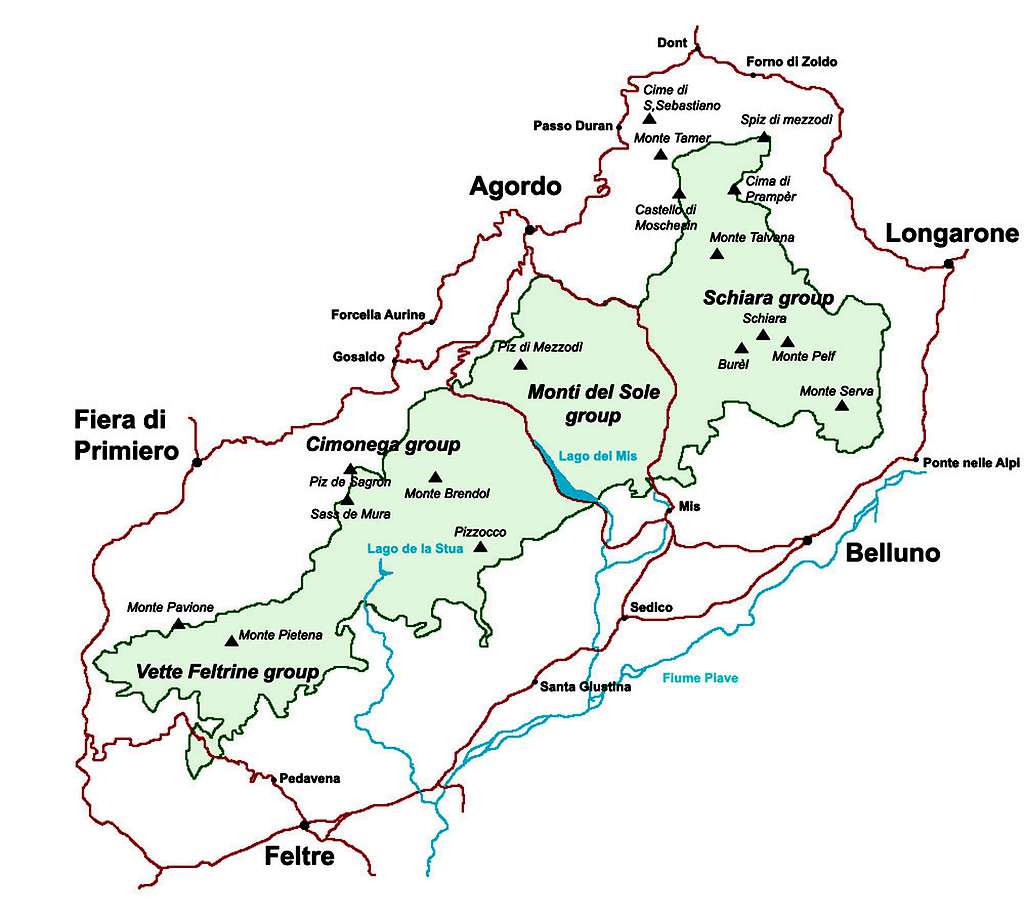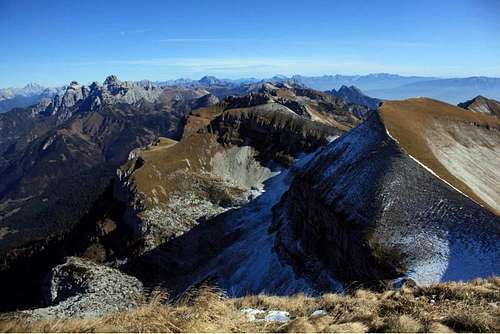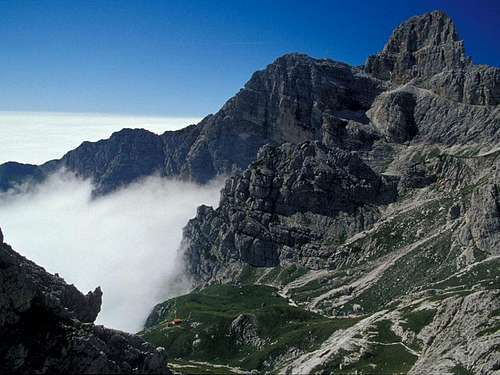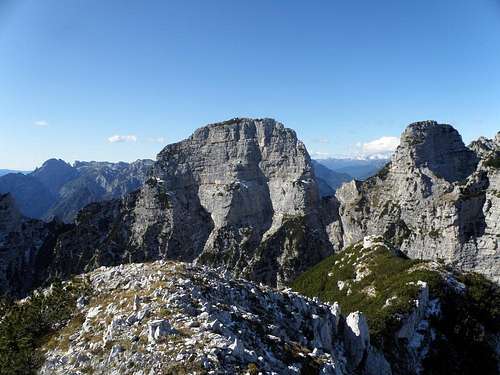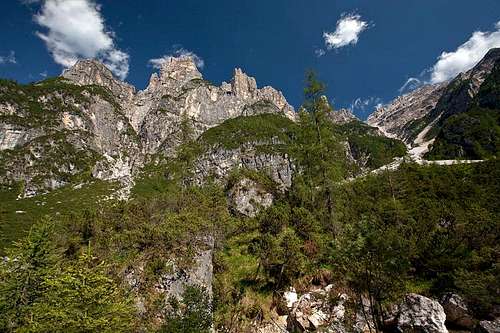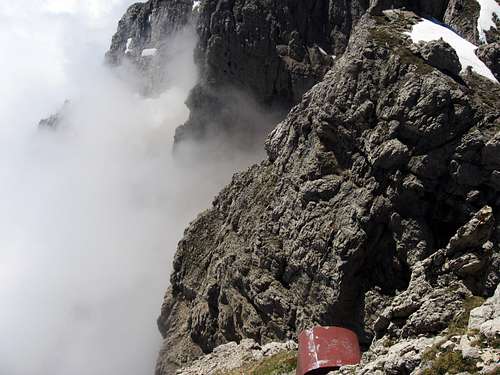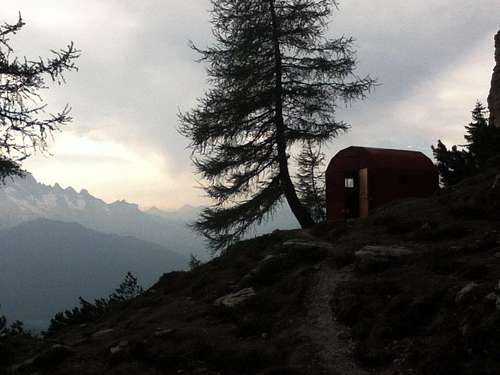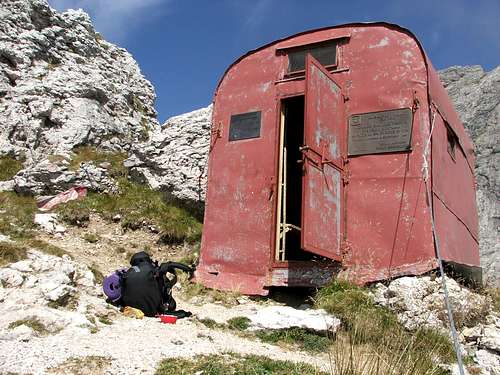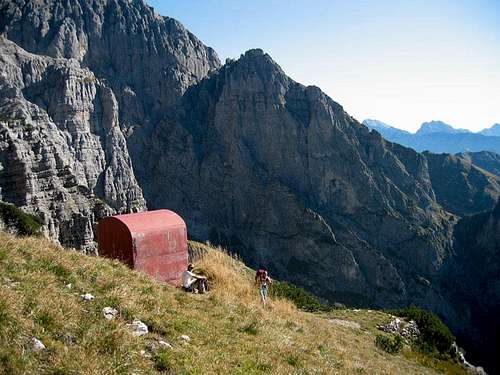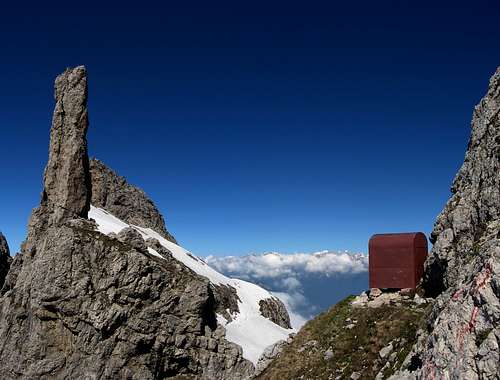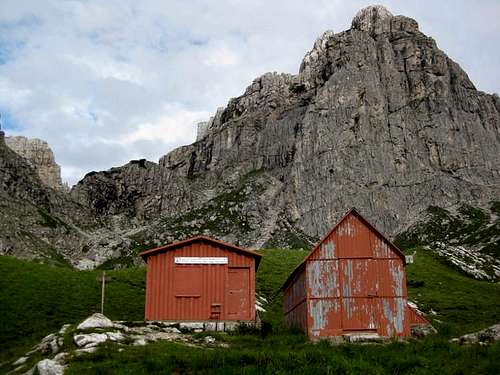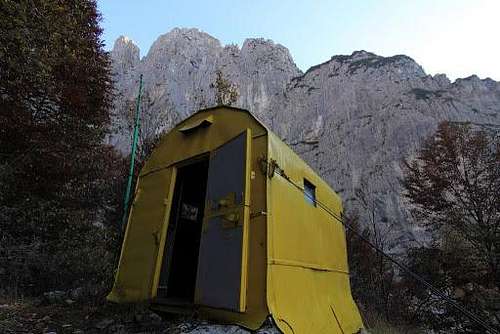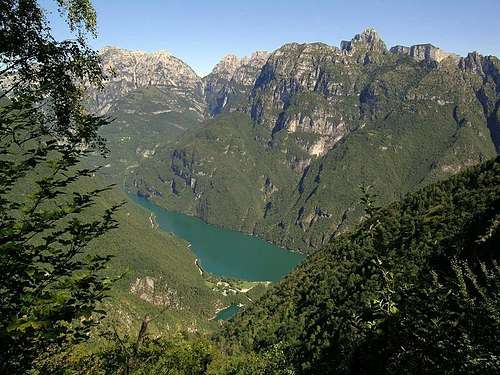-
 19016 Hits
19016 Hits
-
 88.51% Score
88.51% Score
-
 27 Votes
27 Votes
|
|
Area/Range |
|---|---|
|
|
46.21510°N / 12.04760°E |
|
|
Hiking, Mountaineering, Trad Climbing, Sport Climbing, Toprope, Bouldering, Ice Climbing, Aid Climbing, Big Wall, Mixed, Scrambling, Via Ferrata, Canyoneering, Skiing |
|
|
Spring, Summer, Fall, Winter |
|
|
8415 ft / 2565 m |
|
|
Wilderness
Parco Nazionale delle Dolomiti Bellunesi
When people comes to the Dolomites, always talk about the same mountains. Tre Cime, Marmolada, Civetta... Personally, after I had seen a little bit of them, I was impressed also by the smallest, less famous and frequented and especially wildest... This is the case of the Dolomiti Bellunesi. The walls and the cliffs are the same of the most famous Dolomites, but with a lower altitude and more covered by pines. Since they do not reach 3000 meters they are less visited by the mass tourism, and this is just an advantage... Where a famous mountain hosts a refuge, here there's only a bivouac or a cave; where on other parts it is placed a "Via ferrata", here goes only a "Viàz".
If you don't look for famous climbing routes but wilderness and silence, if you don't like crowded refuges, souvenir shops and cols full of motorcyclists with sidecars...I think this mountain range is the right one for 12 months a year.
History
The “Parco Nazionale delle Dolomiti Bellunesi” was created to protect an area of outstanding and natural landscape. The Vette Feltrine and Monte Serva were already famous for their flora since the 18th century. The presence of rare species and an exceptional variety of environments is mainly due to the geographical location. It is in fact situated on the edge of the southeastern Alps, in very inaccessible areas, some of which have remained ice-free during very cold periods (glaciations) that have taken place during the Quaternary and the last of which was sold about 10000-12000 years ago.
It’s entirely placed inside the province of Belluno (Veneto region), where the Monte Schiara with the elevation of 2565 m is the highest summit. The group is shared by the commons of: Belluno, Cesiomaggiore, Feltre, Forno di Zoldo, Gosaldo, La Valle Agordina, Longarone, Pedavena, Ponte nelle Alpi, Rivamonte Agordino, San Gregorio nelle Alpi, Santa Giustina, Sedico, Sospirolo, Sovramonte.
The areas of major natural interest are located in the highest mountains. The great variety of environments and landscapes is the most obvious feature particularly welcome in the summer season, characterized by colorful blooming.
The Western area, one of the Vette Feltrine properly so called, is characterized by peaks covered with grass (the most famous one is the pyramid of Monte Pavione 2335 m) and extensive scree slopes, glacial cirques, basins. It is accessed from the hilly area through steep paths that bypass the steep slopes but of great interest, with spaces that recall the rugged mountain landscapes. The subgroup of Cimonega, and its highest peak Sass de Mura, 2550 m high, has instead a typical Dolomites structure.
The Monti del Sole (on both sides, Mis and Cordevole) represent the wildest heart of the Park; proud and almost inaccessible sanctuary where natural forces seem to reject the attempts of man. Even as a very low altitude, deep ravines, gullies detritus, small waterfalls, steep ridges and rocky crags, wooded ravines, paint a landscape of rare beauty that reminds us of the most eastern areas of the Alps.
Also on Belluno side appreciates the alternation between towering walls of the Dolomites (Burel and Schiara) and peaks covered with grass (Monte Serva). Of exceptional quality also the beautiful forest in the basin of the woode hollow Cajada and grass-rock group of the Talvena.
Characteristic of the inner Dolomites healthy finally the cool slopes of Zoldo (Val Pramper and Grisol) which is different from the harsh and precipitous slopes that can be seen traveling up the Piave Valley. Within the perimeter of the park are also two artificial lakes, the Mis and La Stua in Val Canzoi.
Getting There
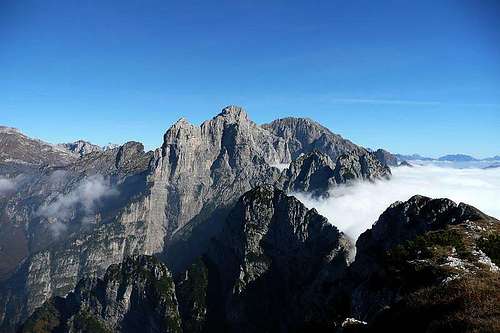
The park covers the administrative territories of the fifteen townships, identified in four geographic areas: the Feltre, the Agordino, the province of Belluno and the Val di Zoldo. The south western area of the park is bordered by the Provincia Autonoma di Trento. The main entrance to the city park are Belluno, Feltre and Zoldo.
Belluno:
Belluno is reachable from Mestre and Venice, through the A27 motorway (exit Pian di Vedoia) and then along a short stretch before the state 51 to Ponte nelle Alpi and then the highway 50. For those who come from Padova, you may want to continue along the A4 motorway (Milan-Venice), exit at Mestre and, from this, reach Belluno via the motorway A27.
Feltre:
Feltre is reachable from Vicenza along the highway in the Val d'Astico A31 (exit Dueville), then continue along the SS 47 (Val Sugana) almost to Primolano, and then stretch of the highway 50. From the north, the main access roads to Feltre are: for those coming from the Trento SS47 (Highway of Val Sugana) to Primolano, and the state for those 50 crosses the Passo Rolle, and Belluno, for those coming from Cortina d 'Ampezzo and the Austrian border, is statale 51 (Alemagna).
Zoldo:
Zoldo is reachable from Belluno from the highway 50 Belluno-Longarone-Zoldo. Or from Feltre to Canale d'Agordo-Agordo-Passo Duran. From the village of Forno di Zoldo, a paved road leads to Pian de la Fòpa" 1200m. From here paths take to the northern part of the park.
From Friuli Venezia Giulia, for those coming from Gorizia, Trieste and the Slovenian border, it is preferable to take the A4 motorway and take, first of Mestre, the motorway A27 to Belluno, while those coming from Udine and Pordenone can follow the road 13 to Vittorio Veneto and then Route 51 to Ponte nelle Alpi and from here a short section of the state 50 to Belluno.
The Park area is intersected by two roads: the provincial 2 of Valle del Mis and statale Agordina 203 in the stretch that runs through the lower Val Cordévole. They run almost parallel and are separated from each other by the Monti del Sole group, and put in communication with the media Valbelluna to Agordino.
Unless the statale 203 Agordina, which rises from the valley of the Cordevole, and the road of Val Canzoi and Valle del Mis, there are other ways of penetration in the Park. Roads and forest tracks are strictly closed to vehicular traffic.
Subgroups
The mountains enclosed into the park, belong to important Dolomites groups.- Col di Luna 2.295 m
- Cima Dodici 2.265 m
- Monte Ramezza 2.250 m
- Sasso Scarnia 2.226 m
- Monte Pietena 2.195 m
- Sass de Mura 2.547 m (main summit)
- Piz de Sagron 2.486 m
- Cima Pelughet 1.950 m
- Monte Neva 2.228 m
- Piz de Mez 2.440 m
- Il Comedon 2.325 m
- Monte Brendol 2.150m
- Pizzocco 2.187m
- Cima del Bus del Diàol 2.148 m
- I Ferùch (Group of wild pinnacles, highest point Torre dei Ferùch 2.119m)
- Torre del Mont Alt 2.043 m
- Monte Pizzon (or Piz de Mezzodì not to be confused with the near Spiz di Mezzodì) main summit 2.240m
- Spiz Mary 2.217 m
- Spiz Nord 2.305 m
- Spiz Est 2.317 m
- Spiz di Mezzo 2.324 m
- Spiz Sud 2.309 m
- Cima del Venièr 2.237 m
- Monte Coro 2.324 m
- Cima di Prampèr 2.409 m (main summit)
- Cima di Pramperèt 2.337 m
- Castello di Moschesin 2.499 m
- Cima delle Forzelete 2.448 m
- Cima de la Gardesana 2.446 m
- Cresta del Petorgnon 1.914 m
- Monte Talvena 2.542 m
- Cime della Scala 1.902 m
- Pelf 2.502 m
- Burèl 2.281 m
- Monte Zelo 2.083 m
- Monte Coro 1.985 m
- Catena del Terne-Tiròn-Sabiòi 2.000 m
- Catena della Pala Alta 1.933 m
- Monte Serva 2133 m
- La Schiara 2.565 m (main summit)
Viàz
Red tape
- in the article by Silvia Mazzani: Dolomites living mountains
- on the Unesco Official web-site: Unesco
- on the Fondazione Dolomiti Unesco web-site: Fondazione Dolomiti Unesco
Camping
Huts and Bivouacs
Tourist informatios
Parco Nazionale Dolomiti Bellunesi
Piazzale Zancanaro, 1 - 32032 Feltre (BL) Tel. 0439/3328 - Fax 0439/332999- E-mail: info@dolomitipark.it Posta Certificata: entepndb@postecert.it
| Monday | 9.00 - 12.30 | 15.00 - 17.30 |
| Tuesday | 9.00 - 12.30 | Close |
| Wednesday | 9.00 - 12.30 | 15.00 - 17.30 |
| Thursday | 9.00 - 12.30 | 15.00 - 17.30 |
| Friday | 9.00 - 12.30 | Close |
The monitoring of the Parco Nazionale Dolomiti Bellunesi belongs to "Corpo Forestale dello Stato"
C.T.A. Feltre - Comandante Dott.ssa Berto Marina Viale del Vincheto, 9 - 32032 Celarda - Feltre Tel. 0439/840411 - Fax 0439/840441 - cta.feltre@corpoforestale.it Open monday to friday 8.00/16.00
Meteo
ARPAV DOLOMITI METEO Phone +390436780007 fax +390436780008
CENTRO VALANGHE DI ARABBA Phone +390436755711 fax 043679319 e-mail cva@arpa.veneto.it
Informations and links
- Tourist informations and assistance (I.A.T.)
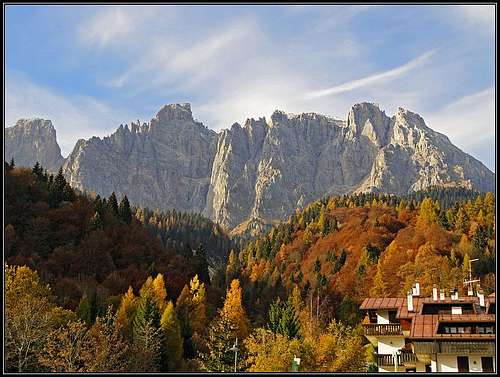
The mountains of Cimonega Group are worth of belonging to Dolomites - they are as wild and beautiful as the most popular other groups. One of their highest mountains is Piz de Sagron 2.486 m.
Belluno, Piazza dei Martiri 8, Tel. 0437/940083 - Fax 0437/940073 Feltre, Piazzetta Trento e Trieste 9, Tel. 0439/2540 - Fax 0439/2839 Forno di Zoldo, Via Roma 10/a, Tel. 0437/787349 - Fax 0437/787340
- Ticket office "Dolomiti Bus" Belluno, piazzale Stazione, Tel. 0437/941167 - 0437/941237 Feltre, viale Piave 7, Tel. 0439/2798
- Rail stations Belluno, Tel. 0437/25765, biglietteria Tel. 0437/944438 Feltre, Tel. 0439/2317
- First Aid SUEM (Servizo Urgenza Emergenza Medica), Tel. 118 Soccorso alpino ed Elisoccorso, Tel. 118


